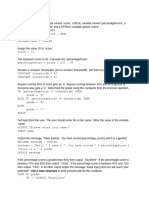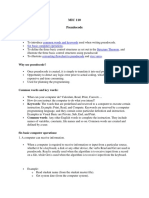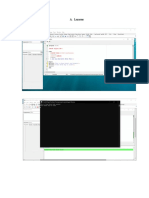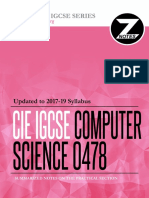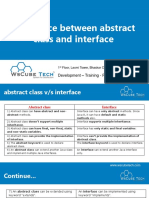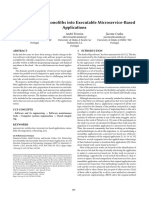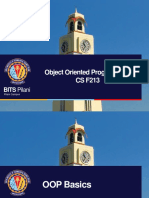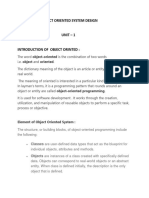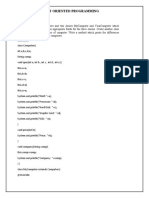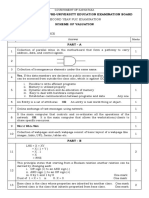0% found this document useful (0 votes)
80 views6 pagesPseudocode Caie
The document provides an overview of pseudocode conventions and programming concepts that may be examined, including:
- Lines are indented by three spaces and keywords are in uppercase or PascalCase
- Basic data types include integers, reals, characters, strings, booleans, and dates
- Variables are declared with identifiers and types, and arrays can be one or two dimensional
- User-defined types like enums, records, sets, and pointers can be created
- Common operations include arithmetic, relational, logical, strings, and numeric functions
- Control structures include if/else selection and for, repeat, and while iteration
- Procedures and functions can be used along with passing arguments by value or reference
-
Uploaded by
abkjrCopyright
© © All Rights Reserved
We take content rights seriously. If you suspect this is your content, claim it here.
Available Formats
Download as TXT, PDF, TXT or read online on Scribd
0% found this document useful (0 votes)
80 views6 pagesPseudocode Caie
The document provides an overview of pseudocode conventions and programming concepts that may be examined, including:
- Lines are indented by three spaces and keywords are in uppercase or PascalCase
- Basic data types include integers, reals, characters, strings, booleans, and dates
- Variables are declared with identifiers and types, and arrays can be one or two dimensional
- User-defined types like enums, records, sets, and pointers can be created
- Common operations include arithmetic, relational, logical, strings, and numeric functions
- Control structures include if/else selection and for, repeat, and while iteration
- Procedures and functions can be used along with passing arguments by value or reference
-
Uploaded by
abkjrCopyright
© © All Rights Reserved
We take content rights seriously. If you suspect this is your content, claim it here.
Available Formats
Download as TXT, PDF, TXT or read online on Scribd
/ 6



